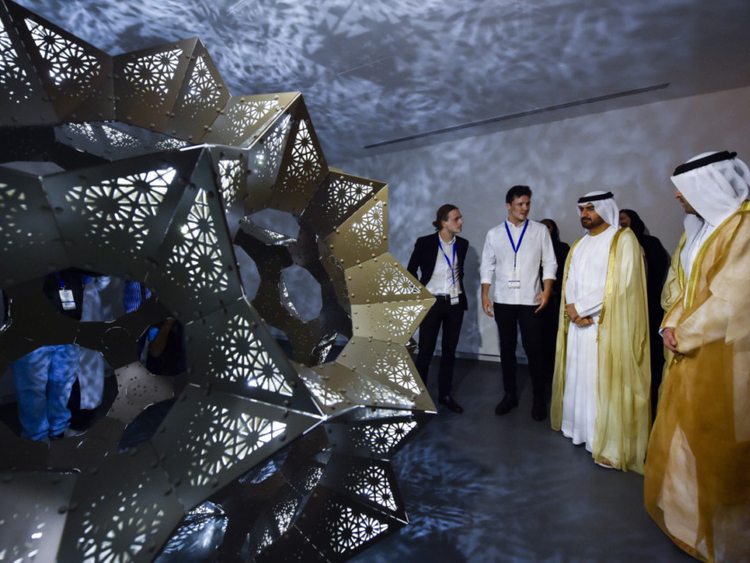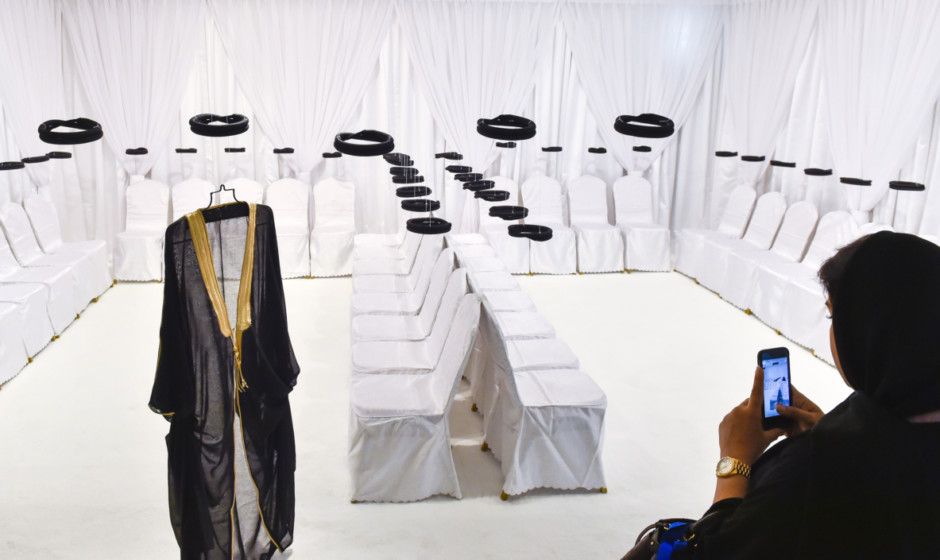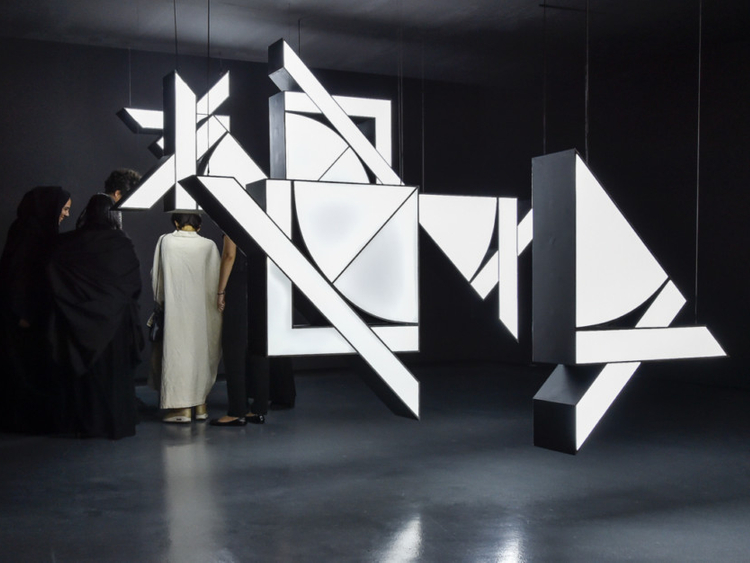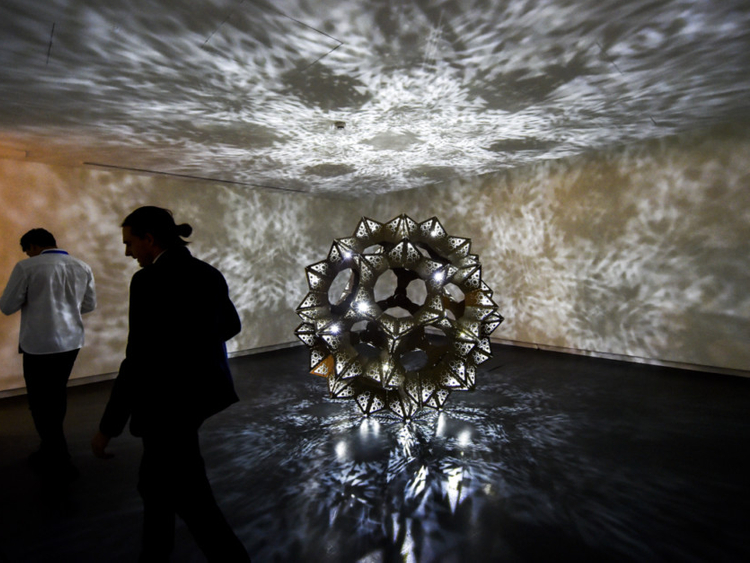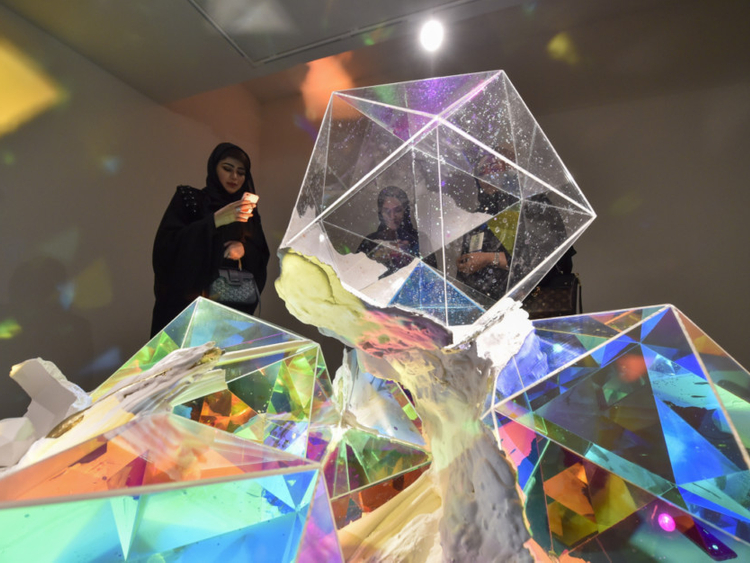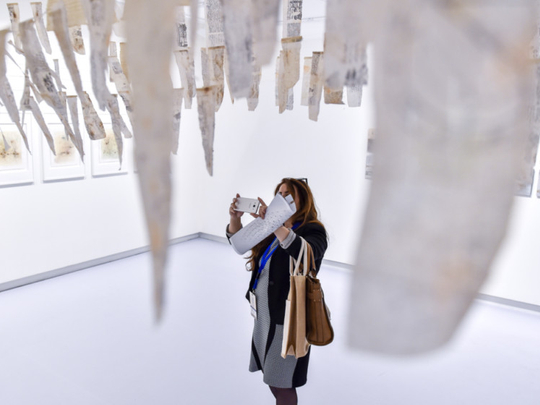
Sharjah: The Islamic Arts Festival on Wednesday opened in Sharjah, featuring over 40 exhibits representing or inspired by Muslim and Arab creativity.
More than 30 of the exhibits — paintings, sculptures and installations — can be seen at Sharjah Art Museum. The rest are displayed at Al Majaz Waterfront, Al Majaz Amphitheatre, Awqaf Department, Al Qasba, Maraya Art Centre, and Calligraphy Square.
The festival, running until January 23 next year, is held under the patronage of His Highness Dr Shaikh Sultan Bin Mohammad Al Qasimi, Member of the Supreme Council and Ruler of Sharjah.
On Wednesday, the 20th edition of the festival was inaugurated by Shaikh Abdullah Bin Salem Bin Sultan Al Qasimi, Deputy Ruler of Sharjah, who toured the exhibits and interacted with the artists at Sharjah Art Museum.
Organised by the Cultural Affairs Department at the Sharjah Department of Culture, the festival also offers over 200 activities, workshops and lectures. A complimentary ‘Festival General Programme’ book available at the participating venues has more details.
Some of the displays are obvious in their connection to Islamic art, such as Arabic calligraphy and paintings of famous mosques. Others are more subtle — inspired by Islamic themes, as opposed to directly representing them — such as an installation of glass and fluorescent tubes criss-crossing each other.
“I’m really impressed by the works on display here. I like the installation ‘My Wedding Reception’ [by Emirati artist Khalid Sharaf]. It’s obvious it’s a traditional Arab wedding party even though there is only the groom’s garment and empty chairs here,” said Ziad Barakat, 39, a visitor from Iraq.
The new edition’s theme, “Athar” or Impact, serves as a concept to unite artists. The new concept, organisers said, reveals the effect that the artists intend to achieve through their work and shows how to harness contemporary art to bridge the cultural and artistic distance between the East and the West.
Romina Khanom, a participating artist from the UK, is presenting a maze installation of hanging rugs in which lasers have cut out Islamic geometry designs. Four years ago, she used to make the cut-outs by hand, using a precision knife, taking around three months to carve out some 30 carpets.
Khanom said: “It’s really therapeutic when you’re doing it by hand, and I would’ve loved to do this by hand, but the scale being big, I really wanted to make an impact for the show [Islamic Arts Festival], as the theme is Impact. The designs have all come from different parts of the Middle East and Islamic culture. For me, the rugs also present a nostalgic feeling because growing up in an Asian household, we always had a rug on the wall.”
More than 28 organisations have assisted in the coordination of the festival projects.


